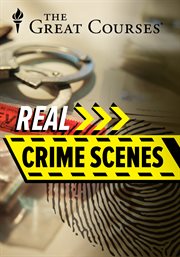Review by Booklist Review
Ever heard of the Styrian defense? How about Bertillonage? Heos' latest covers these and more, examining forensic science from its debatable conception (a 221 BCE ancient Chinese crime-scene handbook) to the dawn of DNA evidence. Through arsenic poisoning, autopsies, fingerprint evidence, and criminal profiling, Heos sheds light not only on forensic innovations but also forensic imperfections, often embedding research with court cases that are as historically crucial as they are ambiguous. The trial of Sacco and Vanzetti, for example, relied heavily upon two decidedly unreliable elements: eyewitness testimonies and incomplete firearm analysis. Investigators in the Samuel Sheppard case, on the other hand where blood spatter tests were prominently employed for the first time were scrutinized for their preferential treatment of a wealthy, white defendant. Punctuated by fascinating photos, a smattering of educational asides, and astute pop-culture references (Dexter, Les Misérables, The Silence of the Lambs), and followed by a glossary of key terms, this is sure to appeal to wannabe FBI agents, budding history buffs, armchair detectives, and everyone in between.--Shemroske, Briana Copyright 2016 Booklist
From Booklist, Copyright (c) American Library Association. Used with permission.
Review by School Library Journal Review
Gr 8 Up-The use of DNA evidence by forensic scientists to help solve crimes is a relatively new innovation. It was only in 1994 that the FBI created a database of DNA samples from convicted and suspected criminals called the Combined DNA Index System (CODIS). However, the field of forensic science has been around for centuries. In fact, as early as 270 CE there was Zhang Ju, a Chinese coroner who wrote about the crimes he solved by examining the bodies of the victims. Using numerous real-life cases, Heos presents a riveting history of the evolution of modern forensic science. One of the first scientific tests ever developed in relation to murder was one for determining the presence of poison, in particular arsenic. This 18th-century breakthrough laid the groundwork for countless other developments in the quest to solve crimes. Heos deftly incorporates the stories behind many murders to illuminate advancements in areas such as fingerprint evidence, firearm and blood pattern analysis, and forensic anthropology (how bodies decompose). Also covered are the rise of the medical examiner, the advent of criminal profilers, and the development of DNA evidence. The text, with photographs sprinkled throughout, is gripping and easy to read but not for the faint of heart. VERDICT Sherlock Holmes lovers, CSI: Miami aficionados, and forensic science students will all be drawn to this rather gruesome yet highly entertaining and fact-packed history.-Ragan O'Malley, Saint Ann's School, Brooklyn © Copyright 2016. Library Journals LLC, a wholly owned subsidiary of Media Source, Inc. No redistribution permitted.
(c) Copyright Library Journals LLC, a wholly owned subsidiary of Media Source, Inc. No redistribution permitted.
Review by Horn Book Review
Each of eleven chapters chronologically traces the development of one branch of forensic science and the experts who practice it. Methods used to reconstruct a crime and identify its perpetrator include autopsy; collection of crime scene evidence; fingerprint, ballistic evidence, blood pattern, and DNA analysis; psychological profiling; and good old deductive reasoning. Heos cogently presents these techniques and several others through the examination of historical murder, theft, and mayhem cases, both (in)famous and little known. She also touches on certain types of evidence -- such as bite mark analysis and eyewitness testimony -- that have come under scrutiny as more sophisticated forensic technologies have arisen. Primary source quotations are seamlessly woven in, accompanied by archival images and documents. The chronological coverage of each individual discipline makes for a slightly muddy perspective on the history of forensic science as a whole, but this approach does ably communicate the sense that forensic analysis is both ancient (coroner Zhang Ju authored A Book of Criminal Cases in 207 CE China) and constantly evolving (emerging technologies will more accurately identify the guilty and exonerate the innocent). Heoss conversational text is forthright with the (sometimes disturbing) facts, but never sensationalized -- keeping the focus squarely on the fascinating science. Robust back matter includes a glossary, quotation and photo source notes, and an extensive bibliography. katie bircher(c) Copyright 2016. The Horn Book, Inc., a wholly owned subsidiary of Media Source, Inc. No redistribution permitted.
(c) Copyright The Horn Book, Inc., a wholly owned subsidiary of Media Source, Inc. No redistribution permitted.

